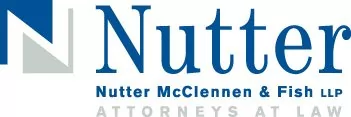This is the first of two advisories describing the estate and charitable planning provisions in the American Taxpayer Relief Act of 2012. This advisory covers one tax-savings measure with a benefit that expires at the end of this month.
The American Taxpayer Relief Act of 2012 ("ATRA"), enacted January 3, 2013, includes some opportunities for individuals interested in making charitable contributions who are 70 1/2 or older and are receiving distributions from IRAs. Action must be taken before February 1, 2013, to take advantage of some of these potential tax breaks.
ATRA revives the "IRA charitable rollover" that was in effect through 2011. In certain circumstances, this IRA charitable rollover permitted individuals to direct that an IRA custodian distribute up to $100,000 from the IRA directly to a charity, and have the distribution excluded from income altogether. As further explained below, ATRA now allows similar treatment for certain 2012 and 2013 distributions (up to $100,000).
Note that contributions to non-operating private foundations, donor-advised funds and supporting organizations do not qualify, nor do distributions from employer-sponsored retirement plans such as SIMPLE IRAs and SEPs.
The special ATRA rules for 2012 and 2013 are as follows:
1. An individual who received an IRA distribution during the month of December 2012 may transfer a portion not exceeding $100,000 in cash to a qualified charity before February 1, 2013, and the distribution will be excluded from 2012 income.
2. Alternatively, during January 2013, an individual may request that up to $100,000 be transferred directly from his or her IRA to a qualified charity before February 1, 2013, and have that amount excluded from 2012 income.
3. During the remainder of 2013, individuals are also permitted to direct a distribution from an IRA of up to $100,000 to a qualified charity and exclude that amount from 2013 income. In effect, this permits taxpayers who elected the options in (1) or (2) above to transfer a total of $200,000 to charities from their IRA and to exclude the entire $200,000 from income ($100,000 in 2012 and $100,000 in 2013).
Who is most likely to benefit from using the IRA charitable rollover?
Taxpayers with significant charitable contributions.
Charitable deductions cannot exceed 50% of a taxpayer's adjusted gross income in any year. Those who make significant contributions can benefit from the rollover, since this technique does not rely on the charitable deduction, which contains the percentage limit.
Taxpayers subject to a state income tax.
Massachusetts and several other states do not permit a state income tax charitable deduction. By using the rollover, state income tax may be reduced.
Taxpayers who may be subject to the AMT.
Certain itemized deductions including those for state income taxes and real estate taxes can cause a taxpayer to become subject to the federal alternative minimum tax ("AMT"). The AMT is designed to ensure that high income taxpayers pay a minimum amount of income tax and do not receive undue advantage from itemized deductions. The AMT imposes a maximum rate of 28%, whereas the regular income tax system has a maximum rate for 2012 of 35%. Massachusetts residents have relatively high state income tax deductions and may be vulnerable to the application of the AMT for this reason.
The itemized deduction for charitable contributions is allowed for both the regular tax system and the AMT. However, if an individual's regular tax bracket is higher than the 28% AMT rate, a large charitable contribution can reduce regular income tax liability to a greater extent than AMT tax liability. The taxpayer must pay whichever tax bill is higher. In this situation, having the IRA distribution excluded from income, as illustrated above, is more beneficial than including the IRA distribution in income and then taking a charitable deduction.
Taxpayers who do not itemize.
Individuals who do not itemize deductions benefit by using this approach. Because they use the standard deduction, they would not normally save income taxes by making a charitable contribution. The IRA charitable rollover permits a non-itemizer to exclude the distribution from income and pay less income tax.
Conclusion.
IRA owners should consider total 2012 and anticipated 2013 income and deductions before deciding on an IRA charitable rollover. For 2012, the decision should be made quickly, however. Please contact your Nutter estate planning or tax lawyer, or any of the following attorneys, if you would like to consider this opportunity in light of your individual circumstances.
This update is for information purposes only and should not be construed as legal advice on any specific facts or circumstances. Under the rules of the Supreme Judicial Court of Massachusetts, this material may be considered as advertising.



